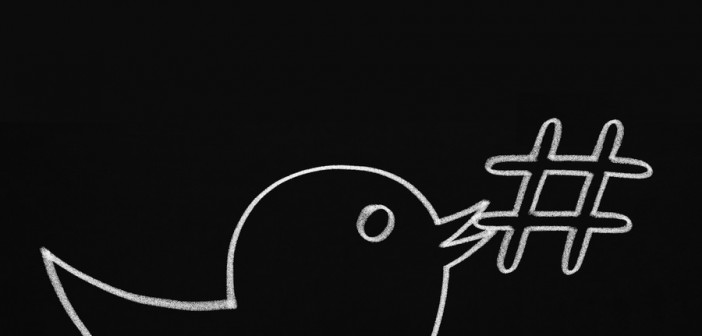I recently saw a billboard for a state tourism campaign. Like any well-crafted outdoor advertising, it sported vibrant photography, clever copy and a smart tagline.
And there it was. Small enough to be subservient but large enough to be distracting.
I paused for a second and wondered what the advertiser possibly hoped I would do with this information?
Would I suddenly seek out an online conversation with interstate travelers? Was I better equipped to share my new-found desire to vacation in the mountains?
Or was this just a lazy attempt to appear contemporary through mimicry?
The hashtag should be banished from the advertiser’s toolkit. Here are three reasons:
Trending organically is virtually impossible.
Bud Light’s “Up For Whatever” campaign aggressively promotes its #UpForWhatever hashtag. Buoyed by hundreds of millions of media dollars, this hashtag appears between 100 and 300 times per day on Twitter, according to Topsy Analytics.
It sounds impressive. But consider that hashtags promoted by @Midnight, a late-night cable show with a relatively modest audience, garner tens of thousands of Twitter mentions every night. On July 29, the hashtag #NewHarryPotterBooks (which featured ideas such as “Dumb and Dumbledore”) appeared in more than 50,000 tweets.
Marketers love to envision their hashtag underpinning cultural conversations. The reality, however, is that truly denting the public consciousness in this manner requires a level of sheer scale that’s simply inaccessible to messaging rooted in commercial intent.
Talk is cheap.
Esurance solved the scale dilemma with a commercial immediately following the Super Bowl that promised a $1.5 million prize to a lucky person who posted to Twitter with the hashtag #EsuranceSave30. Within one minute of the spot airing, more than 200,000 tweets containing this hashtag were posted.
The initiative certainly allowed Esurance to “own the Super Bowl conversation.” It’s difficult to believe, however, that affirming humans are still responsive to Pavlovian stimuli was the most profitable activity a multimillion-dollar marketing investment could drive. I’m sure the “buzz” charts in the recap presentation were stunning. But any logic that attempts to connect policy sales to a sweepstakes with virtually no barrier to entry is bound to be tortured.
Online conversations about brands are the result of effective marketing — not the cause.
Clothes don’t make the man.
Did your parents ever try to bond with you by listening to your music? Maybe they attempted to copy your fashion or use your slang?
While noble, these gestures never made your parents any more relatable. That’s because being cool is about more than copying conventions. Your style is an extension of the principles and beliefs that bind you to your peers. There’s more to being chic than ticking boxes on a checklist.
Similarly, brands mistakenly believe that using hashtags will make them seem modern and approachable. But being modern and approachable requires more than just a command of vernacular. The best consumer connections are forged on an emotional level through shared human values — and rarely is a hashtag up to this task.
Convincing people that our brands are more than mindless, capitalist zombies is difficult work. Every day it seems there’s a new reason to believe that profits and stock prices are the only fuel capable of powering society’s engines.
The brands that are best equipped to overcome this cynicism are those with a greater sense of purpose, a mission that resonates with core consumers. They speak and behave in a way that understands what gets others with similar beliefs out of bed in the morning. When they communicate, it’s not merely about changing perceptions — it’s about demonstrating who they truly are at a primal, spiritual level.
And if they’re doing that effectively, chances are there’s no need for a hashtag.


